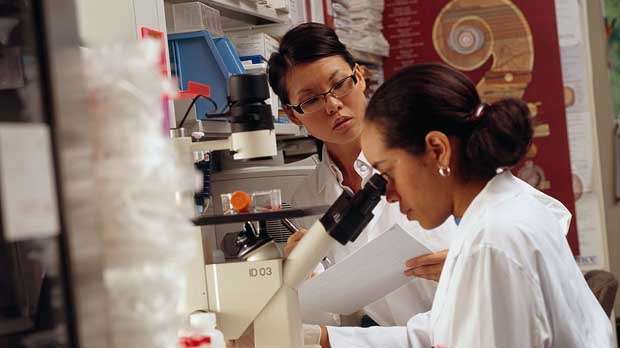6 things you need to know about cervical screening

It's Cervical Screening Awareness Week, so we're giving a run-down of what you need to know about cervical screening, also known as the smear test.
Cervical screening isn't actually a test for cancer. Although it does sometimes find cervical cancers, cervical screening is a way of finding abnormal changes to cells, which could become cancerous in the future.
Most people in the UK who receive an invitation for cervical screening take part. But the test can seem a bit daunting, particularly if you've never had it before.
While it does have some possible risks, the test prevents at least 2,000 cervical cancer deaths each year in the UK.
It's completely up to the individual whether to go or not. But the answers to these 6 questions could help you decide.
1. Who's it for?
Cervical screening is for everyone with a cervix, regardless of sexual or gender identity. This includes anyone who was born female, and in the UK it's offered to those aged 25-64. And you'll need to be registered with a doctor to be invited.
Screening isn't offered to people under 25 because research shows that, for this age group, it would actually do more harm than good.
If you've never been sexually active, cervical screening might not be of benefit. That's because you're less likely to have come into contact with the human papillomavirus (HPV), which is usually spread during sexual activity. Some types of this virus can cause changes to cervical cells that could develop into cervical cancer.
The majority of those who have been infected with HPV won't be affected by the virus, but HPV is the cause of most cases of cervical cancer. You should consider screening even if you've had the HPV vaccine, which protects against the 2 types of HPV that cause most, but not all, cervical cancers.
Like other screening programmes, cervical screening is for people who don't have any symptoms. So if you're worried about a change to your body that lasts or is unusual for you, whether you're of screening age or not, you should speak to your doctor.
2. What happens?
It's usually done by a practice nurse at a doctor's surgery. After a quick chat, the nurse will ask the patient to lie on their back with their knees raised and parted. They then use a speculum, which opens the vagina, to be able to see the cervix.
A small, soft brush is used to collect some cells from the cervix. The doctor or nurse will then remove the speculum and let the patient know that the test is done.
The cells that have been collected are sent off to a lab to check for any abnormal changes.
3. What if I'm embarrassed?
It's normal to feel self-conscious, especially on the first visit.
"When women are invited for routine cervical screening, they may feel a little anxious about exposing an intimate part of their bodies," says Mary Hoey, one of our senior cancer information nurses.
"It can be reassuring for women to know that most of these tests are done by practice nurses, who are very experienced explaining about and doing cervical screening tests. This can be very important in helping to make women feel comfortable and relaxed."
When booking the appointment, you can ask for a man or woman to do the test. You can also take someone with you into the appointment (this can be a friend or family member, or someone who works at the practice).
4. Does it hurt?
Most people won't experience pain from cervical screening, but sometimes the speculum can be uncomfortable.
In some cases, the muscles around the vagina can tighten, which can make it difficult to insert the speculum, and sometimes this is painful. This is known as vaginismus – people with this condition often find it painful to have penetrative sex, or to use tampons.
Speak with your doctor or nurse if you have concerns about this. And you can always ask the nurse to stop at any point if you feel pain or too much discomfort.
5. Does it take long?
Most cervical screening appointments are quicker than a normal doctor's appointment, and you'll be able to carry on with your day afterwards.
Some practices offer cervical screening at weekends or outside normal working hours too.
After the test, the nurse will let you know when to expect your results, which will be posted to your home address.
6. What happens if I get an abnormal result?
The vast majority of cervical screening results are normal.
But if the test isn't clear or finds any abnormal changes in the cells, you might be asked to come back for another test, or to go for a different type of test called a colposcopy.
These tests help to show how different the changed cells are from the norm, so that doctors can suggest the best treatment options.
Finding abnormal cells doesn't mean you have cancer. In fact, finding these cells and treating them can actually prevent cervical cancer from developing.
It's rare to find cervical cancer through screening, and as more women are screened, cervical cancer is becoming even less common.

















